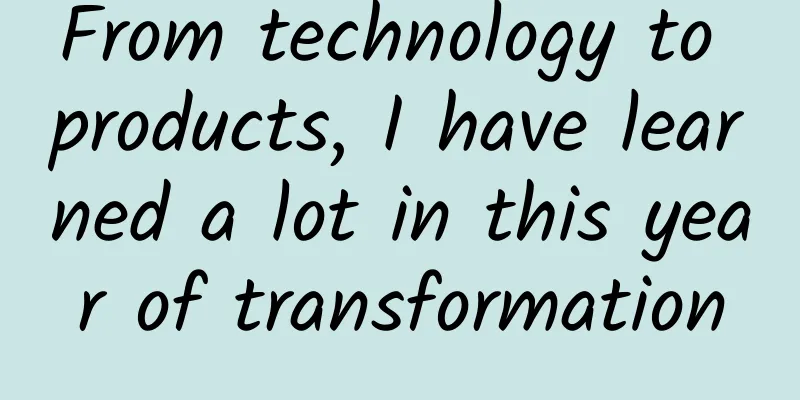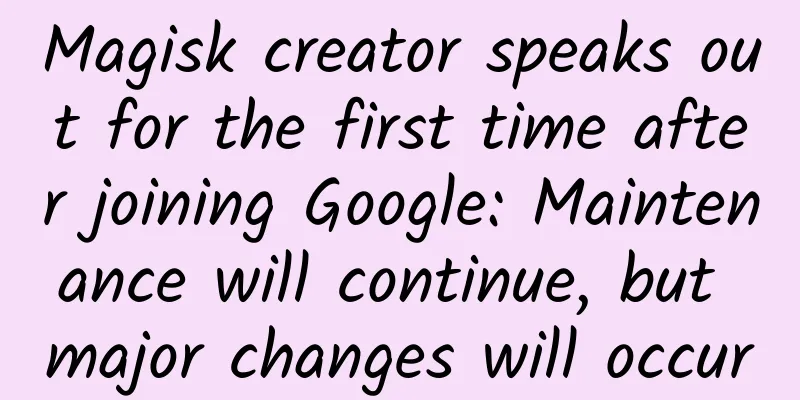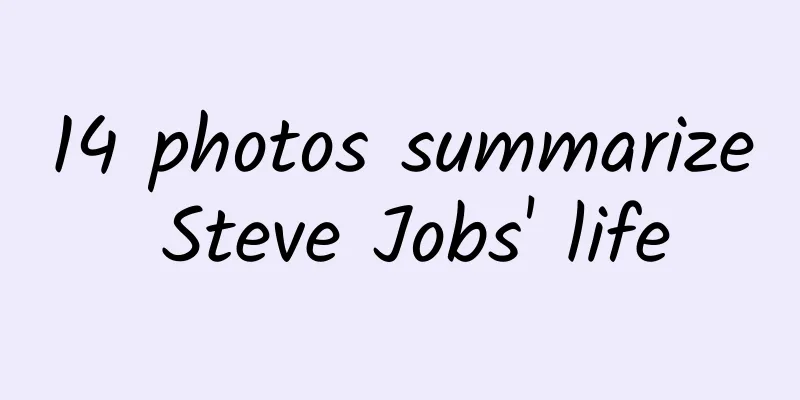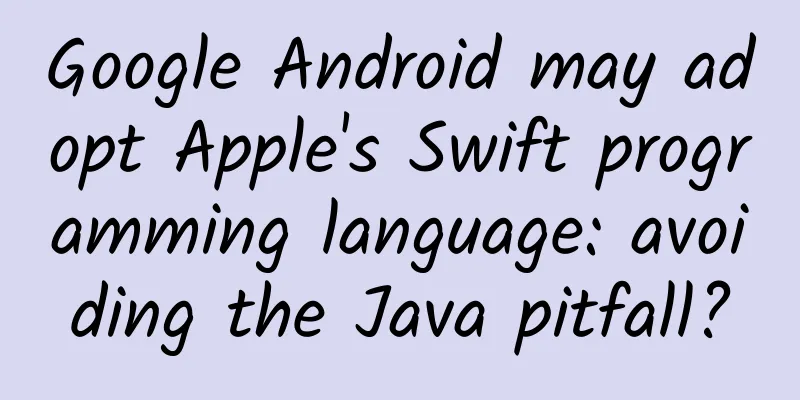From technology to products, I have learned a lot in this year of transformation

|
Preface From the most familiar development to unfamiliar products, from the initial curiosity to the confusion in the middle to the recent enlightenment, I have experienced and grown along the way. I picked up my pen to record the changes in my mentality, consciousness, and thinking in this year. It can be regarded as a summary of the past and an expectation for the future. I got started because of technology and went out because of products. I understand the product Speaking of products, or Internet products, the first time I clearly understood the meaning of this concept was in 2011. That year, smartphones began to rise. I was deeply impressed. The Android system was still upgrading from 1.x to 2.x that year, and the iPhone was still a distant luxury for me. It was also in that year that I started to learn Android development and later iOS development, embarking on the road of mobile development. It was also at that time that I started to work on mobile App projects. At that time, I equated projects with products. At that time, my understanding of the product was superficial, and I focused more on the visible interface and the functions that could be used. I believe that many students who are new to the product industry will have this stage, and they think that designing a beautiful interface and cool functions is a successful product. It was from that time that I started to develop projects and found that I had my own insights into the so-called project design, and often gave my own suggestions to the project leader, that is, the product manager. I think that was my earliest product feeling. From then on, I found that I was full of interest in the process of creating and designing a useful thing, and laid the groundwork. In the process of development, I began to consciously understand this process. In addition to doing a good job of development, I began to "not do my job" to learn and understand what design and products are. I began to learn and understand this aspect from the Internet and some industry conferences. From then on, I began to become more and more interested in this process. From then on, I knew that this process is called product design, and the role that leads this process is called product manager, that is, PM (Product Manager). Product manager, it sounds like a high-end word, but this manager is not that manager. Product managers have no administrative power, no power to lead business strategy. Product managers are responsible for the implementation of business strategy, defining products, designing products, coordinating resources from all parties to complete product research and development and launch, as well as post-launch operation and maintenance under certain conditions. If the product is likened to a child, then the product manager is the child's mother. In reality, the work of a product manager is far less high-end than its name. Product managers need to deal with every product-related problem, communicate with all parties to reach a consensus, go to the scene to solve problems, deal with big and small chores, and run around in every scene related to the product. Therefore, on the Internet, great product managers self-deprecatingly call themselves product dogs or product dogs. In my opinion, product dog is a commendatory word. It is loyal to its own products. It is diligent and strives to solve every problem of the product. It is optimistic. Every little progress makes it happy, and every shortcoming is its driving force to move forward. Counting the outstanding product managers in the world, the stars are shining. Steve Jobs is the spokesperson of the world. The Apple series of products he defined and designed changed an era and set the trend. His harshness, innovation, and original intention to change the world have influenced product managers in the technology industry today and are regarded as classics. Zhang Xiaolong, the father of WeChat, is well versed in human nature and trends. He can make a product that is integrated into people's lives and hundreds of millions of people pay for it. It is truly a realm. I believe that every product manager has the dream of changing the world, and they are all stumbling forward on this road of no return. After all, only a few can change the world. Only oneself can change. On the road of product, cultivate and improve oneself, and inadvertently find that you have done something remarkable. Keep your feet on the ground, look up at the stars, have the mind of the universe, and at the same time have the diligence of an ant. I started working on products in October 2014, and it has been exactly one year now. I am working for a startup company, and it is a coincidence that I switched from technology to products. From a product perspective, my product journey has gone through three stages in total this year, and they are also three completely different stages. Along the way, my mentality, consciousness, and thinking have all been undergoing changes, or transformations, accompanied by hardships and the tenacity of not giving up. In general, in terms of thinking consciousness, I have gone through three stages: engineering thinking, functional thinking, and product thinking. Thinking determines mentality and action, and I will record my transformation. Phase 1: Engineering Thinking I started to work on products in October 2014. For about three months from that stage, my thinking on products was more from the perspective of technology and system. I define this stage as the engineering thinking stage. Why do I say that? Because when I design products, the first starting point is the technical implementation level. I define and design products by the difficulty of implementation and the system perspective. There is a big disadvantage to doing this, which is that it is out of touch with reality. The reality I am talking about is not the reality of technical implementation, but the needs and actual scenarios. It is easy to become design for design. I believe that students who do technology will have a feeling that when they receive a demand, they first consider it from the perspective of the existing engineering architecture and the expansion perspective. The most important factor to consider whether a demand or a function is realized is the compatibility of the existing system and the difficulty of expansion. This is a very normal way of thinking, because I am the same. But from another perspective, the value of a demand does not lie in its own technical difficulty, but in whether it solves the problem of product users. If a demand is defined as a technical product, then we are doing a scientific research task. On the contrary, the product is a commercial task. So, when I first switched from the technical mode to the product mode, I spent quite a while defining and designing products through technology. At this time, the products were detached from the real scenarios and far from user needs, and I began to reflect. The product output under engineering thinking is more like an industrial product, rather than an output that can solve real problems from a human perspective. It is a technical product or a scientific research result, far away from actual needs and scenarios. You will find that such a product is almost unusable after being put on the market, which is a very serious problem. Under the engineering thinking mode, there is a lack of user awareness, and of course there is no user experience. It is not a bad thing to have problems. The terrible thing is that I can't find the problems. After finding the problems, I started to solve them, so I gradually entered the second stage. Stage 2: Functional Thinking I found that the product work under the engineering thinking was not satisfactory, so I began to consciously think about how to analyze and understand the needs, and how to transform a need into a function for users through technical means. This was my second stage, functional thinking, which lasted for nearly half a year. At this time, I began to realize that the product is ultimately delivered to users, and all the design processes are to transform a business need into a specific function in a specific scenario. And each function has complete business logic and functional experience. Fortunately, at this time, I began to design products from the user's perspective, transforming a business demand into a function that can be realized by technology, so I began to think around functions. For each demand or optimization, I first started from the functional perspective, how to make it easier for users, what information should be displayed, etc. I focused on the functional experience and visual experience, and began to learn various excellent product designs on the market. So I fell into a functional design cycle under the premise of solving product availability. In order to complete a demand, I will start to consider various possibilities in functional experience, and the focus is on the product function itself, while ignoring its business goals and business value. Moreover, at this time, I found that a product from business strategy to the launch of the final landing product is not only a technical product, but also includes business definition, full business process design, etc. The product always develops in parallel with the business. A truly good product should be product-driven business. In the process of product design, I ignored the interaction with the business, including product operation and business operation after the product is launched. These links constitute a whole to support the operation of a product. And those who make products know that communication and consensus with all parties actually account for a large part of product work. My mind was opened up again, and I began to focus on the business, product strategy and definition, and the business goals that the product needs to achieve. On the premise of ensuring the realization of a correct function, I thought more about what the business goal of this function is. Dating without the purpose of getting married is hooliganism, and product design that is not aimed at achieving business goals is nonsense. Product output under functional thinking has a certain feasibility, because it combines actual needs. Under functional thinking, I have a deep understanding of the product function design of the entire mobile app, and have formed my own thinking mode from information architecture to product interaction design and some visual design. At the same time, I began to think about product problems from a business perspective, what business goals the product has achieved, and how to define and design each link related to the product to ensure that the final product output is usable. So, I gradually entered the third stage. Stage 3: Product Thinking Product thinking is also the stage I am currently in. At this stage, I focus more on business value and business goals. I complete product definition and product design on the premise of fully understanding the business strategy. By fully understanding the business scenarios around the product, I can improve the usability and ease of use of the product, improve the business experience and product experience, and enhance the overall user experience. Back to the basics, return to the essence of the product. Under product thinking, I understand that the process of the product goes beyond engineering and functions, but also covers engineering and functions. It is precisely because of the first two stages that I have a further understanding and understanding of the entire process and every detail of the product. Driven by product awareness and product thinking, I will fully understand the business and clearly define the business goals in the early stage of defining the product, and measure how to quickly achieve them under the current product environment and available resources. During this period, a lot of communication work needs to be completed, with business, operations, design, technology and other relevant functional departments of the company. Further detailed design work will begin on the basis of consensus and feasibility. Product thinking can actually greatly simplify product work, and has greatly improved efficiency in organizing ideas and division of labor and collaboration compared to before. The entire product system is divided into strategic layer, scope layer, structural layer, framework layer, and presentation layer from bottom to top. The lowest strategic layer determines what goals the business and products need to achieve, why people and what scenarios they serve. The scope layer needs to clearly define what to do on the basis of the existing strategy to achieve strategic goals. The structural layer needs to complete the basic information architecture and interaction design based on the content of the scope layer. The framework layer completes the interface design that we can see, and the presentation layer is the visual performance design to make the product look more friendly. A complete product definition and design process needs to go through each stage from bottom to top. Missing a certain stage will lead to incompleteness of the product, and focusing on a certain stage will also lead to imbalance of the product, so product managers need to find a balance point. But in terms of importance, the lower you go, the higher the importance. Another very important part of product thinking is the design of business processes. Product managers are responsible for the final product quality and user experience. In the early stage of design, they need to consider which links the product needs to go through from design to development to final use, and who they need to cooperate with. For example, for products that require data preparation, it is necessary to reach an agreement with the data provider during the product design stage to ensure that the data preparation is ok when the product goes online. For example, for product design that requires operation intervention, it is necessary to invite operation personnel to join in the early communication stage to ensure that they have a clear and consistent understanding of the overall business process and product links. Only in this way can everyone work together to ensure that the product can operate efficiently when the product is launched, rather than unilaterally thinking and defining the product and then delivering it to the downstream partner, which will cause the product to be out of touch with the business. Therefore, product thinking needs to take into account details while considering the overall situation, and keep business, operation, design, and R&D in mind. This process is very tiring, but it is enough to make people grow. While doing a good product, you also do a good job of yourself. My Product Approach In the entire Internet product industry, I am a newcomer to the product industry. There are still many things I need to learn and master. I dare not talk about it here, but only record my understanding. During this year's practice, I gradually formed my own set of methods for making products, and shared them to accept criticism and suggestions and discuss with everyone. Products, like technology, require continuous learning and accumulation plus continuous thinking to break through. So for me, this is a journey of re-learning and breakthroughs, just like learning technology in the beginning, learning, understanding, mastering, organizing, thinking, and breaking through. The following five points are the five key steps in my product development process: 1. Define product strategy The definition of product strategy needs to be based on business strategy. My understanding of business strategy and product strategy is slightly different. The goal of business strategy is to maximize the interests of the organization, while the goal of product strategy is to maximize the interests of users. The product strategy should be implemented under the premise of ensuring the business strategy. Therefore, the definition of product strategy needs to be based on a full understanding of business strategy. This requires obtaining first-hand information from the top management of the organization, that is, the business strategy makers of the organization, to fully understand the definition of business strategy in the most complete state. Next, formulate product strategy based on the complete business strategy definition. An organization or company may have multiple product lines, and then there will be a product strategy, but there is only one business strategy, and all product strategies are formulated to achieve this business strategy. To define the product strategy, it is necessary to analyze who the target users of the product are, where the usage scenarios are, and what the key resources are. Of course, the most important point is what problems the product solves for users. If I want to use one sentence to answer what is the product strategy, I would summarize it as: "What method do we use to solve a problem for whom?" The "we" here refers to the organization and the team, "what method" refers to our core business and service, "who" refers to our target users and customers, and "what problem" refers to the core needs and scenarios. This process does not require any tools or special methods. It only requires the organization and the team to understand and agree, and record it in writing. The key is to think clearly. By defining the key issues and answering them clearly, you can move on to the next step and fully sort out the business process. 2. Sort out business processes Sorting out business processes needs to be based on a clear definition of product strategy. Business processes are designed around product strategic goals, and business goals need to be clarified, and processes are designed to be as simple as possible around the goals. The most critical thing in this process is to define the business goals, and to clarify the business goals, that is, what purpose to achieve, before further process design. In the process of sorting out business processes, it is necessary to consider which key roles are involved in the entire business process, what are the key actions of these roles, and what key information is included in the business process. At the same time, it is necessary to clearly define the way information flows between roles. After completing the definition of business goals, key roles and actions, and key information, you can use a flowchart to express the designed business process in the form of a diagram. I will not go into details about how to draw a flowchart. There are many methods. The key is to clarify the three key links in business process design. In the process of sorting out the business process, it is necessary to clearly define which ones require human participation and processing, and which ones require technical processing. After the complete business process is sorted out, it is clear where the boundaries of the technical product are, and the resources outside the boundaries need to be coordinated to complete. At the same time, the entire process requires full communication with all parties in the organization to ensure that the designed business process is feasible under the existing resource environment. It is also necessary to fully communicate with the R&D team on the role and definition of the technical product in the business process to ensure that it is feasible with existing technology. In general, the process of sorting out the business process is a set of feasible business operation processes designed by product managers to achieve product strategic goals under existing resources. 3. Product prototype design After the business process is clearly sorted out, you can start designing the product prototype. Product prototype design includes information architecture design, functional design, interaction design and visual design. The product manager first needs to define the product information architecture and produce a complete product information structure diagram. Next, based on the understanding of the business process, start functional design. The purpose of functional design is to meet the design of the business process, so there is business process design first and then functional design. When designing product functions, make sure to adopt the principle of minimization. We adopt the principle of minimization feasibility, that is, the MVP (Minimum Viable Product) principle. This is a concept in lean entrepreneurship. You can learn about what MVP is and what lean entrepreneurship is. I think this is a very good set of business and product design practices. After the function is defined, it is the interaction design and visual design. In large companies, there may be dedicated interaction designers and visual designers, but I think that product managers still need to have strong interaction design capabilities and visual aesthetic abilities. The reason why I say that they need to have interaction design capabilities is that the early business process definition and function definition are directly participated in by product managers, and the non-product manager who can best understand and directly transform it into a technical product is the most suitable. This is a more efficient way in my opinion. Of course, what method to use depends on the actual situation of the organization. For example, large companies have many people and fine work, but the disadvantage is low efficiency. As a startup company, I strongly advocate that product managers need to carry out function and interaction design, and finally produce product function interaction diagrams. This process is called low-fidelity design. Of course, this process can be carried out in communication with designers and professional advice can be obtained. The reason why product managers need visual aesthetic abilities is that high-fidelity design is finally perfected by visual designers, but I think a good product manager can distinguish what is a good design and a bad design, and the user's first impression starts from the presentation layer, that is, the visible interface and the useful functions. There are many tools that can be used in the product prototype design process. I often use Apple's keynote, which can be used to make product interface prototypes quickly and beautifully. The interactive design logic can be marked with simple text and connection marks to indicate the jump relationship. Of course, there are many other tools to choose and use, so I won't go into details. After this step is completed, a so-called RPD should be produced. The reason why I say the so-called PRD is because I think that startups should not make a large set of documents for various explanations. The purpose of PRD is to record the entire design output and serve as input materials for all parties in the business and the R&D team. It is enough to make the description clear and conducive to business and technical understanding. This is also the core of lean entrepreneurship. Don't do unnecessary things, be simple and direct, and achieve the goal. 4.Communicate and coordinate resources After completing product strategy definition, business process sorting, and product prototype design, we enter the design implementation stage, which is mainly about communication and resource coordination. At the same time, the design output needs to be fine-tuned and prioritized. This stage is a test of the product manager's priority processing and communication and coordination capabilities. Everyone in the team has different ways of thinking and perspectives. How to make everyone reach a consensus on understanding is a huge project, and communication skills play a very critical role in the middle. Communication with the business cannot be completely based on product technology thinking, and communication with technology cannot be completely based on business thinking. Therefore, product managers play a key role in connecting the upper and lower levels to transmit information. Ensure that technical products can be completed with limited resources and time while ensuring business goals. Communication is about finding the right person and paying attention to the order of communication. Clarify the purpose of communication and then find the most critical role that can solve the problem. If you find the wrong person, you will spend time and energy but still get no results. After finding the right person, you must determine the order of communication. To ensure that things go smoothly and problems are solved quickly, it is important to define a communication order. Generally speaking, I determine the communication order according to the problem stage. For example, in the problem definition stage, it is necessary to complete the definition of the problem with the problem proposer and the relevant decision definer. After the problem is clearly defined, for the specific solution, fully communicate with the resource parties that match the solution, and then ensure that the understanding of all parties is consistent during the implementation of the solution. Ensure direct and efficient communication throughout the process to avoid repeated communication and inadequate communication. In the process of communication and coordination, product managers must not be afraid of trouble. Important things must be said three times: communication, communication, communication. It is very important! 5. Verify and improve products After the above four steps, the product can be launched on schedule. At this time, it is necessary to monitor the actual operation of the business and products, deeply understand the problems on site, and summarize and formulate improvement plans in time after returning. This is the verification link in lean entrepreneurship. The early design can be said to be a priori design to some extent. After the launch, it is necessary to reversely verify the business and products based on the actual operation. This is why MVP design was done before, because the simpler the early design, the lower the cost of later verification and improvement. Good products are polished in the process of continuous verification and improvement, and there is no one-time complete design. In the process of verifying and improving products, I think the most important step is to go to the site, go to where the business happens, go among the users, experience the product in the actual scenario, find problems and develop solutions. Avoid receiving second-hand information, which will mislead product managers to make judgments. When improving products, you can combine each node in the business process. It is important to find the site, go to the site, define the problem on site, come back and develop solutions, quickly verify, quickly try and fail, and quickly improve. Written in *** In the past year, I have completed a transformation from a professional technician to a product person. Technology allowed me to get started and see the details of this industry, and products allowed me to go out and see a broader space. In this process, I have taken many detours, from curiosity and longing at the beginning, to confusion and self-denial in the middle, to the gradual enlightenment and true understanding of products now. Human growth is a process. You can only harvest in autumn if you sow in spring. Looking back on this process, I feel more harvest and growth. My product career has just begun, and there is still a long way to go. I will insist on going on this road, walking well and beautifully! The above are some of my personal summaries and do not represent any opinions. Letting go is a kind of practice, cherishing and bidding farewell to the past, picking up is a kind of experience, confidence and expectation for the future. I have written this far, and what I said may not be correct! |
<<: Entry-level products are awesome! Tencent invests $1 billion in Meituan Dianping
>>: 20+ Useful AngularJS Tools Recommended for Web Developers
Recommend
Learn these 8 "head to toe" health self-test methods to teach you to check yourself in time to eliminate health risks
Many people's lives I've been a bit hecti...
How to plan an online event?
Activities are a tool in operations work, and the...
Facebook AI Director: Deep Learning Technology Trend Report
New Wisdom Original 1 Source: Yann LeCun Compiled...
How can brands “please” young people on Bilibili?
As time goes by, Generation Z is gradually becomi...
The Pacing algorithm behind Facebook's advertising system
[[163141]] Last month, Facebook released its eye-...
Apple's toothpaste squeeze is causing trouble! iPhone 7 sales are going to plummet: Chinese users don't like it
Not long after iPhone 7 was launched on the marke...
Kuaigou Taxi and Focus Media have reached a strategic partnership to jointly change urban travel and make life more convenient
On October 24, Kuaigou Taxi and Focus Media joint...
Homemade web dramas are heading towards the "big" era, and the satellite TV drama model is being refreshed
With the global popularity of online dramas such ...
From community to e-commerce, how did Xiaohongshu become popular?
Since its establishment in June 2013, Xiaohongshu...
Why do you have such a hard time finding seed users?
After the product is launched, someone is needed ...
IHS Markit: 5G Economic Report in the Post-COVID-19 Era
IHS Markit has released a new report, “The 5G Eco...
Robin Li talks about the difference between Baidu and Google: User-generated content
[[128274]] 1. Differences between Baidu and Googl...
Can eating ginkgo nuts cure diabetes? Can soaking ginkgo leaves in water lower blood pressure and blood lipids? Improper consumption may...
gossip Ginkgo is a perennial woody plant of the G...
Xinzhi Short Video Training 10.0 Douyin Course: Editing methods, daily account maintenance, how to deal with videos that have gone viral so that they can continue to go viral
1. New Knowledge 10.0 editing method; 1. Pull the...
On Chinese Valentine's Day, let's see the romance in space
It is the Chinese Valentine's Day again, a tr...









